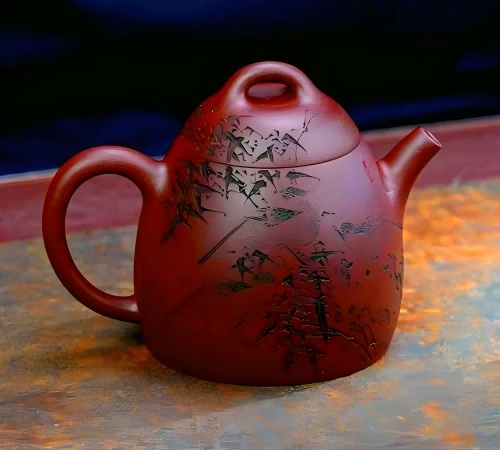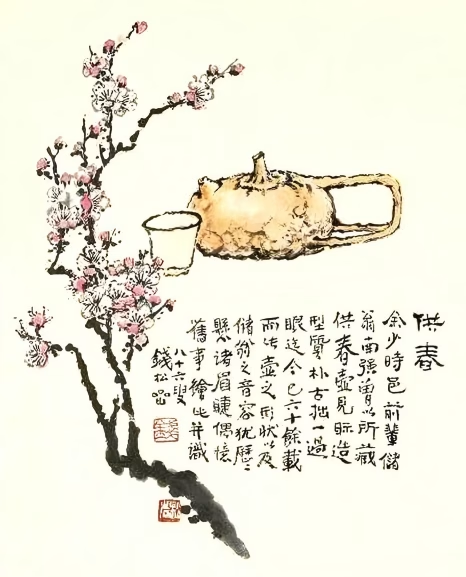Teaware is a common tool in Chinese daily life.
The custom of drinking tea has a long history in China. The great Song Dynasty poet Wang Anshi once said, “People cannot live a day without tea.” This demonstrates the importance of tea drinking in ancient people’s lives.

The History of Zisha Teapots
Zisha teapots originated in the late Tang Dynasty.
Before the Tang Dynasty, teaware and food utensils were indistinguishable. As tea drinking became more widespread, teaware became increasingly sophisticated.
The ideal teapot for drinking tea appeared in the late Tang Dynasty: the Zisha teapot. Made from purple clay, meticulously crafted by artisans, it boasts a purple-red color and a fine, soft texture.
Zisha Teapot Production Area – Yixing
Zisha teapots were already widely used by scholars during the Song Dynasty. The great poet Ouyang Xiu once wrote:
“喜共紫瓯吟且酌,羡君潇洒有余情。”
This line implies that sipping tea and reciting poetry with friends over a purple teapot is the most elegant thing in the world.The “紫瓯” in the poem refers to a purple teapot.
From the late Song Dynasty to the Ming Dynasty, Yixing’s purple clay production rose to prominence. Yixing quickly became the nation’s center for purple clay production. For centuries thereafter, Yixing remained a leading producer of purple clay teapots in China.

History of Yixing
Yixing is located at the junction of Jiangsu, Zhejiang, and Anhui provinces, on the shores of Lake Taihu. Known in ancient times as ‘阳羡'(Yangxian), it was already a renowned tea-producing base during the Tang Dynasty.
Many famous teas were brought annually from Yixing to the imperial palace. The Tang Dynasty “Tea Master” Lu Si remarked,
“天子须赏阳羡茶,百草不敢先开花。”
Means “The Emperor must appreciate Yangxian tea, and all other herbs dare not bloom before it.”
The Emergence of Yixing Zisha Teapots
Thus, Yixing’s production of teapots using clay from Dingshan and Shushan began very early. The emergence of Gong Chun, a master of Zisha ware during the Jiajing period of the Ming Dynasty, brought Chinese Zisha ware to a new level.
As a young boy, Gong Chun served as a servant to Wu Yishan. While studying at Jinsha Temple, Gong Chun took time off to visit the monk. He meticulously scour the finest clay and diligently fold and knead it, ultimately achieving mastery.
After becoming a master of Yixing Zisha ware, his creations became known as “Gongchun pots”.At the time, the saying ““供春之壶,胜于金玉”(“Gongchun’s teapot is better than gold and jade”) was circulated.
From then on, Yixing’s purple clay teapot production flourished, with a plethora of new products and renowned artists emerging.

The purple clay teapot is a work of art
In the mid-Qing Dynasty, Chen Hongshou, one of the “Eight Masters of Xiling,” became involved in the design and production of purple clay teapots. This fusion of calligraphy, painting, and craftsmanship immediately earned him widespread recognition.
Since then, many calligraphers and painters have taken up painting and calligraphy on purple clay teapots. For example, Zhang Bonian, founder of the Shanghai School of Painting, and Wu Changshuo, both nearly abandoned their crafts in their passion for purple clay teapots. This tradition continues to this day.

Leave a Reply